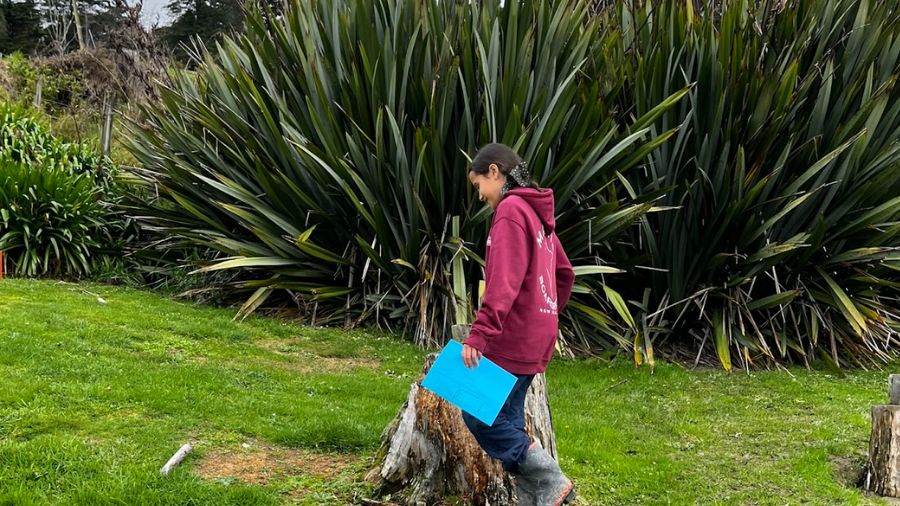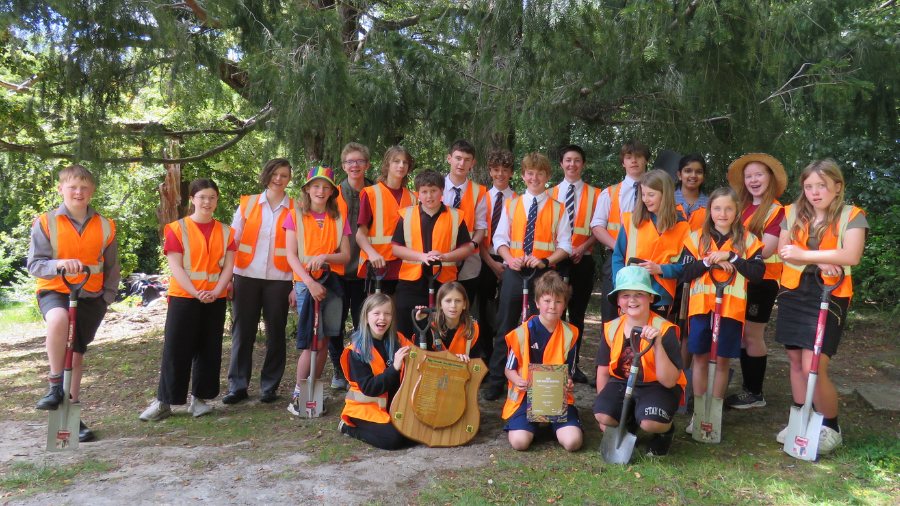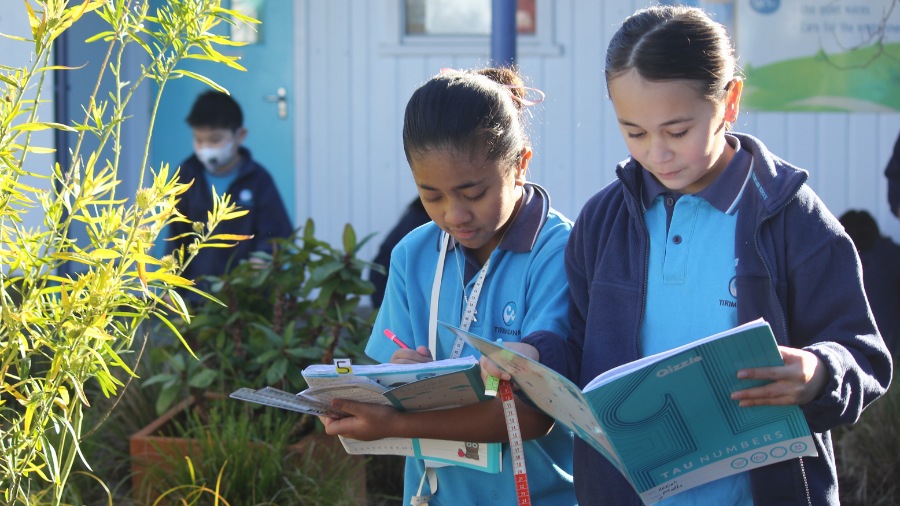Trees can teach us how to be good ancestors.
Growing, planting and caring for trees is a relationship that requires patience, care and commitment, with many rewards along the way. We can guide ākonga to connect with and care for trees by choosing a starting point related to the seasons: collecting seeds, growing seedlings, planting, caring and eventually experiencing the flowers, fruit, shade, branches to climb and other benefits they provide us.
Read about the benefits of trees in this recent article "Does your school have enough trees?" to find out what the research says about why they are so important for learning and the current state of school grounds in Aotearoa.
Late autumn and winter are the best seasons to plant trees, as we start to get more rain and the soil holds more water. There are lots of great events and opportunities to plant trees during Terms Two and Three.
Events: Celebrate and Plant Trees
TERM TWO
Week 2: Outdoor Classroom Day Thursday 8 May
Week 6: World Environment Day and Arbor Day Thursday 5 June
Week 8 : Matariki public holiday Friday 20 June and Winter Solstice Saturday 21 June
TERM THREE
Week 8: Conservation Week September 1 - 7
All of these events offer a chance to engage with your wider community, either by attending a planting day or celebration run by a local group, or by inviting whānau to come into your school grounds and take part in learning about and caring for trees.
Inspiring Stories
Waikato Regional Council has been working with schools to learn about kauri trees and the impact of kauri dieback. Read our new Spotlight article Measuring the Mighty: Maths Adventures in Kauri Education for some inspiration to embed your maths learning within local and relevant contexts.
Honouring Papatūānuku through tree-planting project is an Enviroschools story about the tamariki of Ōpoutere kura who undertook a whole school planting project in the school ngahere (forest). The main image for this Spotlight article shows the tamariki involved with this child-led project.
Schools in the Ruapehu area have also been planting to create outdoor classrooms areas within their school grounds, which you can read about in this Enviroschools story.
Read the Education Gazette article, Labour of love blooms in Taupō for flood-affected schools, about students from Waipāhīhī School who worked with the educators from Kids Greening Taupō to raise native seedlings for the Hawke's Bay.

Eco Action Nursery Trust works with schools across Ōtautahi Christchurch to grow and plant natives, including satellite nurseries based in some of the schools. The engagement from secondary school students and the wider community is an inspiring example of how a long-term, practical project can provide opportunities for agency, alongside the development of values and skills.
Te Kākano nursery in Wānaka has worked in collaboration with Whakatipu Reforestation Trust to develop an education programme that supports ākonga to learn about, grow and care for native plants, from early childhood through to their primary and secondary years.
Read this article from the Education Gazette about schools who are celebrating Matariki by planting native trees in their school grounds.
These projects are examples of how outside providers and the wider community can help support kaiako with relevant and local learning.
Visit our Providers page to search by region and find people and groups near you who can provide support.
Getting Started: Helpful Resources
Restoration Through the Seasons includes a poster and inquiry plan from the Department of Conservation (DOC) that can help guide you towards activities that work best each term. You can also use their inquiry unit Experiencing Native Trees in your Green Space.
Ngā rākau | Trees is a bilingual learning unit created by Science Learning Hub.
Kids Greening Taupō have an online nature classroom about Tipu | Plants of Aotearoa that includes great activities and information about trees and other plants. They have also recently produced a new printable resource about Native Plants, to use when you're out exploring in the ngahere.

Family of Forest and Fungi | He Tukutuku Toiora is a beautiful pukapuka exploring interconnections between trees, fungi and people, with activities to complete and te reo Māori sections.
Tree Beings is a book exploring the science of trees, along with stories of people who study and protect trees around the world. It includes the Aotearoa story of the 1997 Charleston Forest protest, told by Dean Baigent-Mercer. You can access the teacher notes here.
Tihei Taiao is an online series of videos exploring the identification and uses of plants, including rongoā and kai.
The Meaning of Trees by Robert Vennell is another great resource exploring the history and significance of trees.
Get to Know a Tree with this short nature connection activity from DOC.
Explore your local area and use Andrew Crowe's Life-Size Guide to Native Trees to help identify trees using their leaves, flowers, seeds or bark.
Order a copy of Tree Snap or Taukapu Rākau from Trees That Count and have fun learning the names and benefits of some of our common native trees.
If you're part of the Enviroschools programme you should check out the Living Landscapes resources.
Create a Ngahere | Forest in your School
You might already have plans to start a ngahere in your school or kura grounds, or maybe you're involved with a community planting project. Winter is the main season for planting, so keep an eye out for community planting events in your area during Terms 2 and 3.
You could start with this easy activity from the Kiwi Conservation Club: Grow a Leaf Litter Garden, which can be completed in your classroom.
Trees That Count have a range of videos and advice for schools about how to plan and coordinate planting days. Remember to check in with your local community and environmental education providers to get support with this process.
Trees for Survival is a national programme where schools are supported with the resources and knowledge to grow NZ native plant species from seedlings, nurture these and take part in an annual planting day alongside landowners, partners and their peers to plant the trees they nurtured. Visit their website to find out more about how to sign up your school.
He Kākano community nursery have partnered with Whitebait Connection and Te Aho Tū Roa to produce a guide for how to set up a native plant nursery, aimed at schools and communities. They also have guides for seed collection, in both te reo Māori and English.
Wellington City Council have produced a fun video about how to plant like a ninja, to make sure your trees have the best start.






